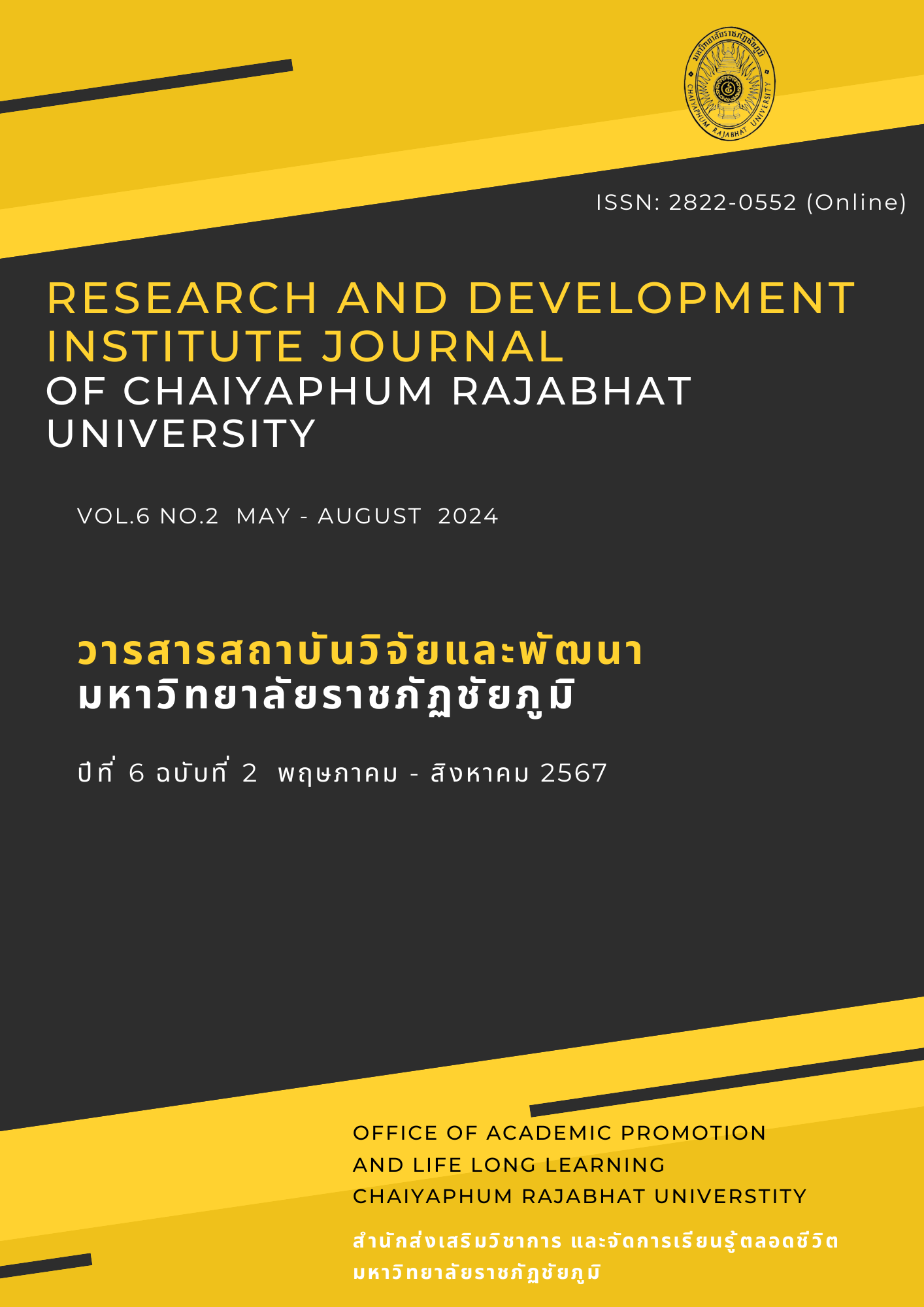THE GENERATION GAP BETWEEN ATTITUDES AND BEHAVIORS TOWARDS WORK PERFORMANCE AMONG PERSONNEL IN THE CHAIYAPHUM PROVINCIAL
Main Article Content
Abstract
This research aimed to study the generation gap regarding attitudes and behaviors in work performance among personnel in Chaiyaphum Provincial Administrative Organization and the generation gap of personnel affecting the attitudes and behaviors in work performance in Chaiyaphum Provincial Administrative Organization. This was quantitative research. The samples were 113 personnel working in Chaiyaphum Provincial Administrative Organization selected by the accidental sampling method based on Kerlinger’s criteria. Data were collected by a questionnaire and analyzed by descriptive statistics, including percentage and mean and inferential statistics (One-Way ANOVA). The study results were as follows. 1. The attitudes and behaviors of the personnel in Chaiyaphum Provincial Administrative Organization were at a very good level, with a mean score of 3.967 and a standard deviation of 0.521 for work attitudes, and a mean score of 3.860 and a standard deviation of 0.620 for work behaviors. 2. The generational gap did significantly affect the attitudes and behaviors of personnel in Chaiyaphum Provincial Administrative Organization at the level of 0.05.
Article Details

This work is licensed under a Creative Commons Attribution-NonCommercial-NoDerivatives 4.0 International License.
Permission to use text, content, images, etc. of publication. Any user to read, download, copy, distribute, print, search, or link to the full texts of articles, crawl them for indexing, pass them as data to software, or use them for any other lawful purpose. But do not use it for commercial use or with the intent to benefit any business. Published under a Creative Commons Attribution-NonCommercial-NoDerivatives 4.0 International License.

This work is licensed under a Creative Commons Attribution-NonCommercial-NoDerivatives 4.0 International License
References
กรรณิการ์ เหมือนประเสริฐ. (2548). ทัศนคติของพนักงานที่มีความสัมพันธ์ต่อพฤติกรรมการปฏิบัติงานของพนักงานในองค์กรบริษัท คูเวต ปิโตรเลียม (ประเทศไทย) จำกัด. [สารนิพนธ์ปริญญามหาบัณฑิต]. มหาวิทยาลัยศรีนครินทรวิโรฒ.
ณัฐวดี ณ ระนอง. (2565). การปฏิบัติงานของข้าราชการภายใต้ปัญหาช่องว่างระหว่างวัย : ศึกษาเฉพาะกรณีสำนักนโยบายและแผนสำนักงานปลัดกระทรวงมหาดไทย. [การค้นคว้าอิสระปริญญามหาบัณฑิต]. มหาวิทยาลัยรามคำแหง.
ถนัดกิจ จันกิเสน. (3 พฤษภาคม 2565). ผลวิจัยใหม่ Gen Z และ Millennials ยอม ‘ลาออก’ หรือ ‘ว่างงาน’ ถ้าต้องทำงานในบริษัทที่ ‘ไม่มีความสุข’. The Standard. https://thestandard.co/gen-z-millennials-rather-quit-jobs-unemployed-than-unhappy-study-data-trends/
นิภา วิริยะพิพัฒน์. (2559). บทบาทของ HRM : การจัดการช่องว่างระหว่างวัยในองค์กร. วารสารวิชาการและวิจัย มทร.พระนครสาขามนุษย์และสังคมศาสตร์, 1(2), 73-88.
พัชราพรรณ กิจพันธ์. (2561). ประเทศไทยเข้าสู่งสังคมผู้สูงอายุ. FDA Journal, 25(3), 4-8.
อับดุลกอเดร์ แวหะยี. (2561). ปัจจัยที่ส่งผลต่อการปฏิบัติงานร่วมกันของบุคลากรต่างช่วงอายุภายในองค์กร. วารสารรามคำแหง, 1(2), 79-94.
Hannam, S., & Yordi, B. (February 2011). Engaging a Multi-Generational Workforce: Practical Advice for Government Managers. IBM Center for The Business of Government. https://www.businessofgovernment.org/sites/default/files/Hannam_Yordi.pdf
Kerlinger, F. N. (1973). Foundations of Behavioral Research (2nd ed.). New York: Holt, Rinehart and Winston.

